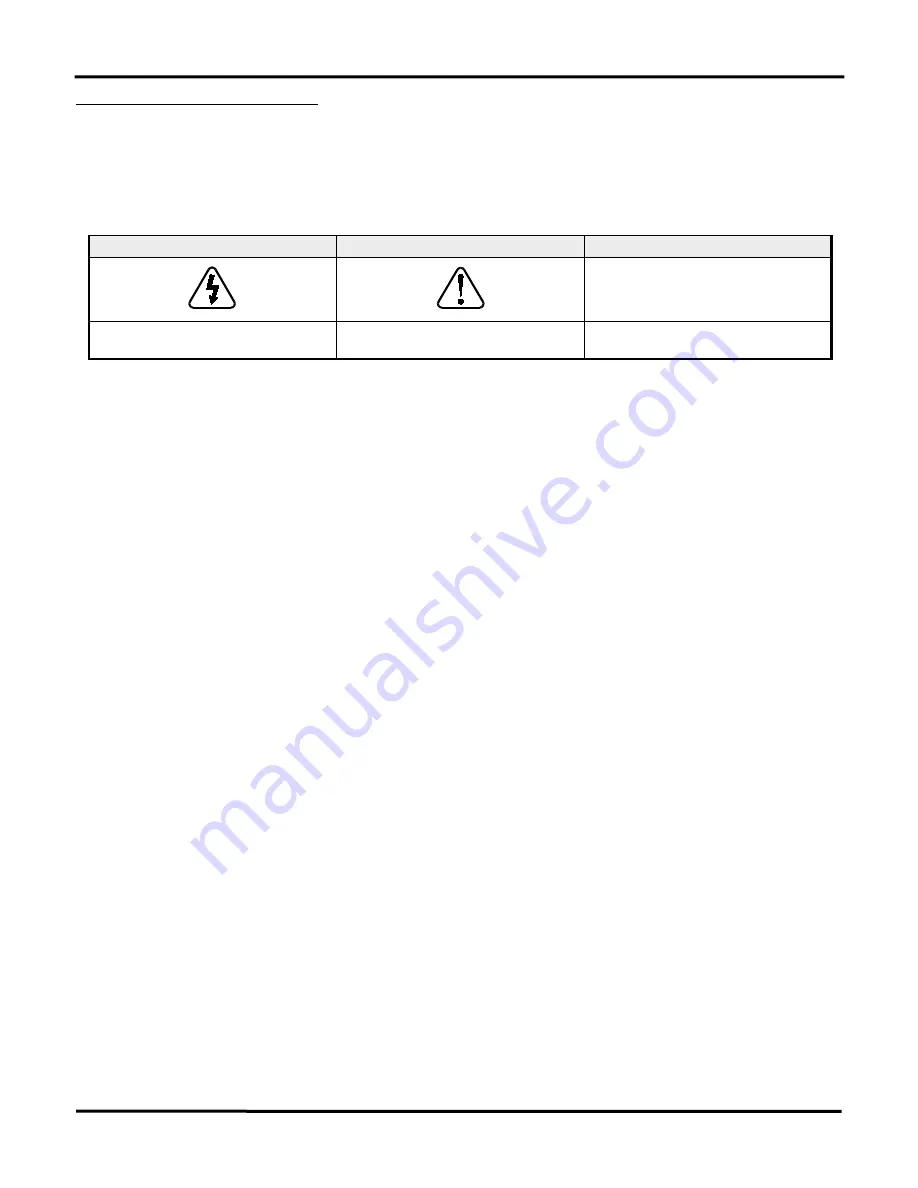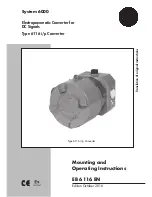
Installation and Operation Manual
2
IMPORTANT SAFETY INSTRUCTIONS
This manual contains important instructions for Model SB1524iX
SAVE THESE INSTRUCTIONS
1. Refer installation and servicing to qualified service personnel. High voltage is present inside unit. Incorrect installation or use may result in risk of electric shock
or fire. No user serviceable parts in this unit.
2. To reduce the risk of electric shock, fire or personal injury, the following symbols are placed throughout this manual to indicate dangerous conditions, or
important safety or operational instructions.
WARNING
CAUTION
IMPORTANT
)
Indicates dangerous conditions or electric
shock potential. Use extreme caution.
Indicates items critical to safe installation or
operation of the unit.
Follow these instructions closely for proper
operation of the unit
3. PERSONAL
PRECAUTIONS
a) Working in the vicinity of lead-acid batteries is dangerous. Batteries produce explosive gasses during normal operation.
b) To reduce risk of battery explosion, follow these instructions and those published by battery manufacturer and manufacturer of any equipment you intend
to use in vicinity of battery.
c) Someone should be within range of your voice or close enough to come to your aid when you work near a lead-acid battery.
d) Have plenty of fresh water and soap nearby in case battery acid contacts skin, clothing or eyes.
e) Wear complete eye protection and clothing protection. Avoid touching eyes while working near battery.
f) If battery acid contacts skin or clothing, wash immediately with soap and water. If acid enters eye, immediately flood eye with running cold water for at
least 15 minutes and get medical attention immediately.
g) NEVER SMOKE or allow a spark or flame in vicinity of battery.
h) Be extra cautious to reduce risk of dropping metal tool onto battery. It might spark or short circuit battery or other electrical part that may cause explosion.
i) Remove personal metal items such as rings, bracelets and watches when working with a lead-acid battery. A lead-acid battery can produce a short circuit
current high enough to weld a ring or the like to metal, causing a severe burn.
j) Remove all sources of power, photovoltaic and battery before servicing or installing.
4. CHARGER LOCATION & INSTALLATION
a)
This unit is designed to charge 12V (6-cell) or 24V (12-cell) flooded or sealed type lead-acid chemistry batteries within the range of 10 to 5,000 amp-
hours. Follow battery manufacturers charging recommendations when considering this unit for use with other battery chemistry.
b)
This unit employs components that tend to produce arcs or sparks. NEVER install in battery compartment or in the presence of explosive gases.
c)
This unit must be installed and wired in accordance with National Electrical Code, ANSI/NFPA 70.
d)
Over current protection for the battery must be provided externally. To reduce the risk of fire, connect to a circuit provided with 25 amperes maximum
branch-circuit over current protection in accordance with National Electrical Code, ANSI/NFPA 70.
e)
Over current protection for the auxiliary load control output or auxiliary battery charge output must be provided externally. To reduce the risk of fire,
connect to load or auxiliary battery with 25 amperes maximum over current protection in accordance with National Electrical Code, ANSI/NFPA 70.
f)
Insure that unit is properly configured for the battery being charged.
g)
This unit is not water tight. Do not expose to rain, snow or excessive moisture.
h)
Insure all terminating connections are clean and tight. Battery, PV and Auxiliary Output terminals are to be tightened to 9 in-lb (1 nm). IPN Network and
battery temperature sensor compression terminals are to be tightened to 2.1 in-lb (0.24 nm).
i)
Do not connect to a PV array capable of producing greater than 16A short circuit current for 12V systems, or 12A short circuit for 24V systems. Limit
input short circuit current to 6A if the 24V input 12V output mode is used or 8A if the 18V input 12V output mode is used.
j)
This unit is not provided with a GFDI (ground-fault detector/interrupter) device and must be used with an external GFDI device as required by Article 690
of National Electrical Code for the installation location.
5. PREPARING TO CHARGE
a)
Never charge a frozen battery.
b)
Be sure battery is mounted in a well ventilated compartment.
c)
Add distilled water in each cell of a lead-acid battery until battery acid reaches level specified by battery manufacturer.






























